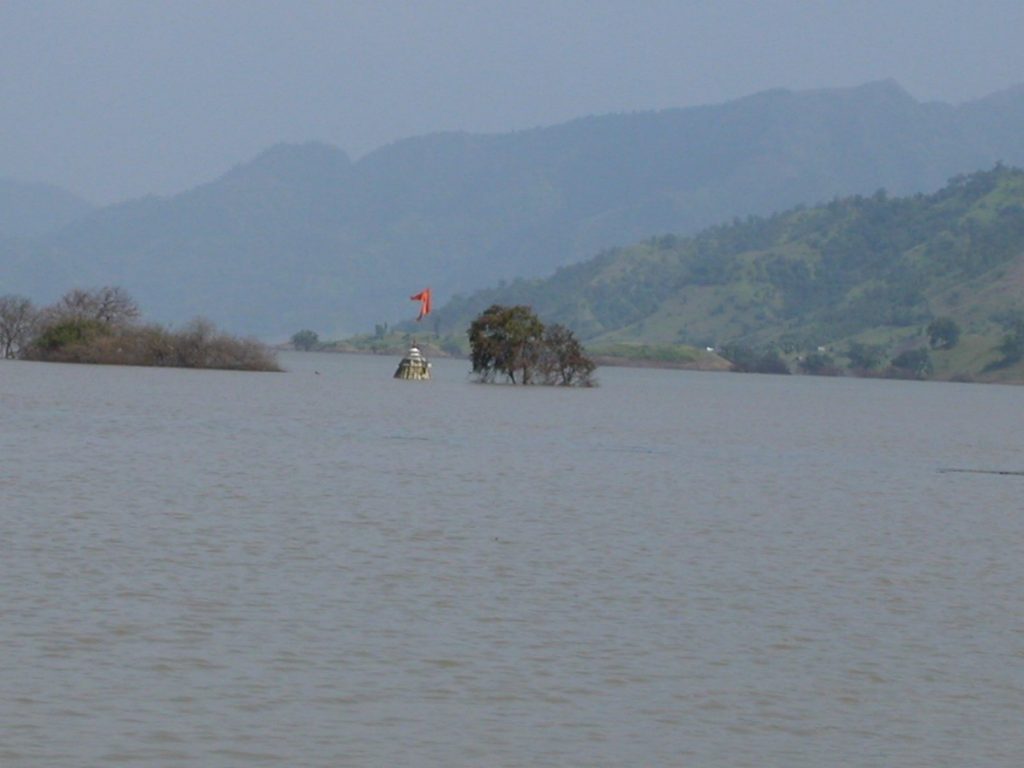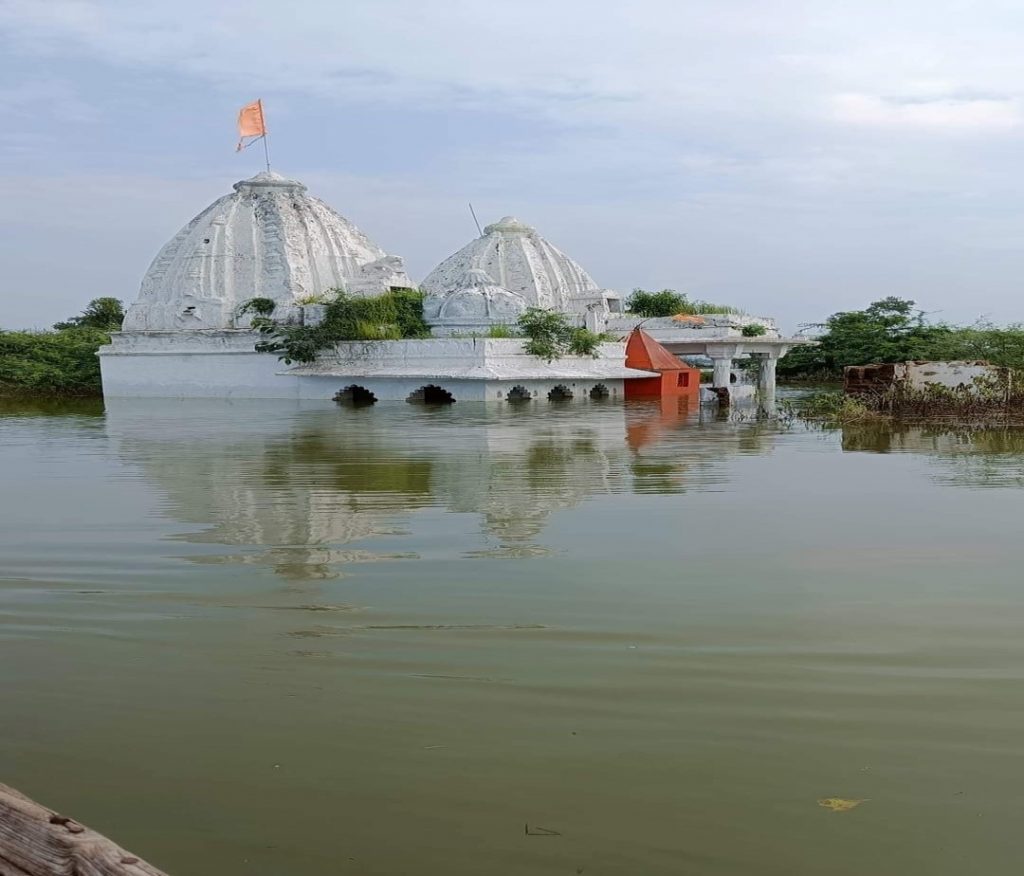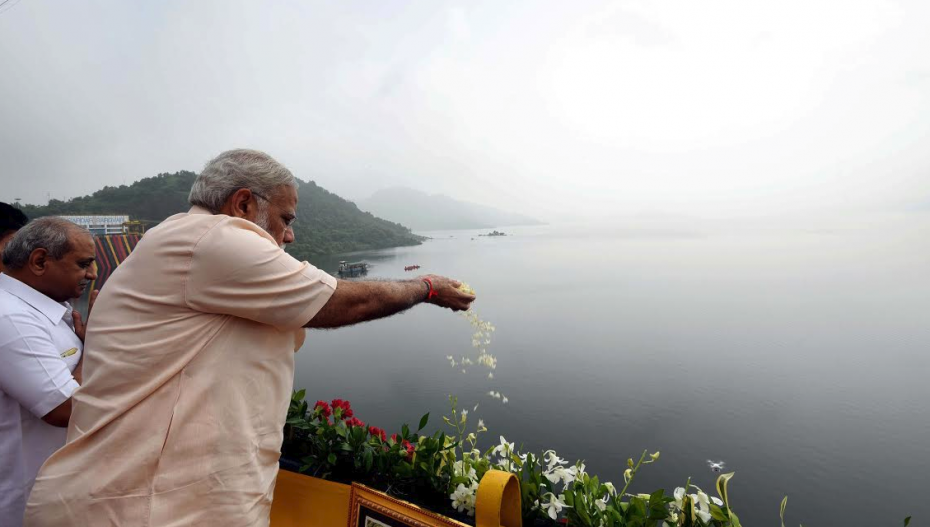While addressing a meeting of state environment ministers on September 23, Prime Minister Narendra Modi said “urban Naxals” had stalled the work of Sardar Sarovar Project (SSP). To know who the Prime Minister is calling “urban Naxals”, and why there has been a delay in the completion of SSP, it is important to revisit the history of the project.
The first challenge to the project came in the year 1961 when India’s first prime minister Jawaharlal Nehru laid the foundation stone of the dam on Adivasi lands at Navagam village in Gujarat. The dam was much smaller back then and was named Navagam dam after the Adivasi village where it was to be built. The same year, lands of six Adivasi villages – Kevadia, Kothi, Limdi, Navagam, Gora and Waghadia – were acquired for the construction of the SSP colony named Kevadia Colony after one of the Adivasi villages, Kevadia.
Hundreds of Adivasi families lost their lands without rehabilitation or proper compensation. Naturally, there was a protest by the Adivasis of these six villages which led to some of them even being jailed and a court case back then.

The struggle for justice and rehabilitation by the oustees of these six villages displaced by the Kevadia colony continues even today, as more and more of their lands and resources are now being diverted for the world’s tallest statue, the Statue of Unity and its five-star tourism.
It is also important to note that at some point, the name of the Navagam Dam was changed to Sardar Sarovar Project obliterating the memory of how it was built by destroying the Adivasi village Navagam and other villages nearby. And now to erase the history that the SSP and its project colony are built on Adivasi lands, there has been a move by the Gujarat government to change the name of Kevadia Colony to Ektanagar, which is being opposed by the Adivasis of Gujarat.
Coming back to the project delay, it did not get delayed because of the struggle by the Adivasis affected by the Kevadia Colony. The delay is because the state of Gujarat wanted a much higher dam in place of the smaller Navagam dam. A much bigger dam would submerge over 200 villages, thousands of hectares of forests and fertile agricultural lands on the banks of the Narmada River in Maharashtra and Madhya Pradesh. Naturally, a dispute ensued between the riparian states over the height of the dam and the distribution of the Narmada waters.
As the party states (should we read “urban Naxals”?) fought hard over the dam height causing a delay with no agreement in sight, the matter had to be referred to the Narmada Water Disputes Tribunal (NWDT) in the year 1969. It took full 10 years for those (should we call them “urban Naxals”?) sitting in the NWDT to give its final award as the matter was delicate.
The final decision of the NWDT came in August 1978 when Morarjibhai Desai, a Gujarati, was the prime minister of India. Morarjibhai who was very keen on building the project spoke of the reasons for the project delay in his autobiography titled, Maru Jeevan Vrutant. These are select excerpts translated from his autobiography giving reasons for the delay:
“In 1947-48, it was thought to implement several irrigation projects in the State of Mumbai… Tapi and Narmada projects were accepted then but since statistical information was not available the sketch of the Narmada project could not be drawn immediately. It was decided by Sardar Vallabhbhai Patel and many of us to first lay out the sketch and implement the Tapi project and after that take up the Narmada Project.
When this project was being planned, I was the Chief Minister of Mumbai State. I had instructed several industrialists of Ahmedabad to set up a ‘Nigam’ to give final outline to the project and to raise necessary funds for the project…However due to lack of funds, the construction work could not be started…then the Government appointed the Khosla commission in the year 1963-64…
While giving its final report in 1965-66, the commission recommended the height of the dam at Navagam to be minimum of 500 or 530 feet… Madhya Pradesh opposed this and did not accept this. Due to this height, approximately 99,000 acres of agricultural land in Madhya Pradesh would drown in the water…Maharashtra where Narmada flew only over 30 miles, joined common cause with Madhya Pradesh and demanded more share in the electricity to be generated. As Madhya Pradesh opposed with fury, it was not possible to implement the project in Gujarat…In order to overcome the deadlock created by Madhya Pradesh… this question was handed over to the legal tribunal in the year 1968-69. Unfortunately, Madhya Pradesh by employing several good and bad measures delayed the matter…”.
After the long delay in the work of the NWDT, it passed its final award in 1979 favouring Gujarat with a much higher dam. This immediately resulted in a powerful people’s movement in Madhya Pradesh against the decision of the NWDT demanding reduction in the height of the dam. This was in order to save villages, forests and fertile agricultural lands from submerging in the state.
Importantly, hundreds of historical temples, religious sites and the route of the Narmada Parikrama, the spiritual pilgrimage taken by Hindus were to be submerged also. To know how the Sardar Sarovar Dam has destroyed religious sites, the Parikrama route and the river Narmada herself, listen to the voices of the oustees of the SSP as shared here.
Unsurprisingly, the agitation was widespread in the state and was led by leaders of both the Congress and the Janta Party in Madhya Pradesh. To listen to the history of the Nimad Bachao Andolan, the role of the political parties as well as the people (should we also call them “urban Naxals”?), involved in this agitation, one could refer to the oral histories of prominent leaders of this struggle.

While opposition to high dams growing across the country and increasing environmental awareness about the devastating impacts large dams leave on the environment, the SSP was further delayed also because the necessary environment and forest clearances required were not coming through from the government of India. These clearances (only conditional) for SSP came through as late as in 1987 as stated by Narmada Control Authority website:
“Sardar Sarovar and Indira Sagar Projects were appraised from environmental angle by the Ministry of Environment & Forests and were accorded clearances during 1987. It was determined that no environmental concern is serious enough to threaten the viability of the project if proper safeguards are adopted.”
But as no environmental safeguard measures were in place and as the governments had no resources to rehabilitate about 2,50,000 people in the submergence villages and an equal number of people to be impacted by project infrastructure, the Narmada Bachao Andolan (NBA), a people’s movement, grew in strength with widespread support across the country. It was in the early 1990s that the NBA approached the highest court of India questioning the very viability of the SSP, and in May 1995, the dam construction of the spillway blocks was halted at 80.3 meters at the direction of the Supreme Court (SC).

This stay on the dam construction was because of the government’s apathy towards the environment and rehabilitation measures. It was only five years later in October 2000 that in its final judgment, the Supreme Court allowed the dam construction to go ahead but only along with the rehabilitation of the people.
But as the government could not rehabilitate the people as per the provisions of the tribunal, construction of the dam progressed in fits and starts as per the nod of the Narmada Control Authority, leading to further delay. It is not a surprise that it was only under Narendra Modi (once the chief minister of Gujarat) as the Prime Minister that the Narmada Control Authority in an emergency meeting in 2017 gave a very hurried clearance to complete the dam and impounding of water as stated by NCA as follows:
“The Narmada Control Authority (NCA) in its 89th Emergency meeting held on 16th June 2017 granted permission of Phase –II proposal, lowering down of the gates and impounding water in the reservoir to Full Reservoir Lever to EL 138.68m.”
This was also after the Supreme Court in 2016-17 ruled that the oustees not rehabilitated yet be paid cash compensation. This was in violation of the land-based provisions of rehabilitation laid down by the NWDT and by the Supreme Court itself. The rehabilitation of oustees is still far from over and their struggle continues.
What is interesting to note is that after such hurried clearances, Modi inaugurated the dam on his birthday in September 2017 while its canal network remained incomplete although the Supreme Court had never stayed its construction! The delay in canal construction has been best explained in a press statement in Gujarati by the ex-chief minister of Gujarat, Suresh Mehta. Select excerpts of the statement are translated as follows:
“…The Government itself is admitting that the work of the canal has not been completed. The Government is also saying that in the year 2017-18, it will build 3,856 kilometres of canal only…If this is the pace at which the Government of Gujarat is going to work, in order to complete all the canals, it will take nearly eleven more years!! Right now, the Government of Gujarat is spending (on the project) 9000 crores a year. At this rate, in the coming eleven years the budget will reach 99,000 crores!! Experts said that by the time the dam height increased, it was possible to do the work of the canals. But the Government failed to do so. Considering this, is not the Government of Gujarat guilty?”
Modi must at least own up to the delay in the canal construction as explained by his own party man Sureshbhai.
When Modi calls people forcibly displaced by “development” projects who are fighting for their own survival and for the protection of the country’s natural resources from being destroyed as “urban Naxals”, it is demeaning of people’s genuine struggles. The Prime Minister must listen to these powerful movements for the protection of the environment and human rights for sustainable development solutions and give them due respect and consideration.
Nandini Oza, formerly an activist of the NBA, is a writer and an oral historian. Oral histories of the Narmada struggle, recorded by her, can be accessed through a website and a book.













